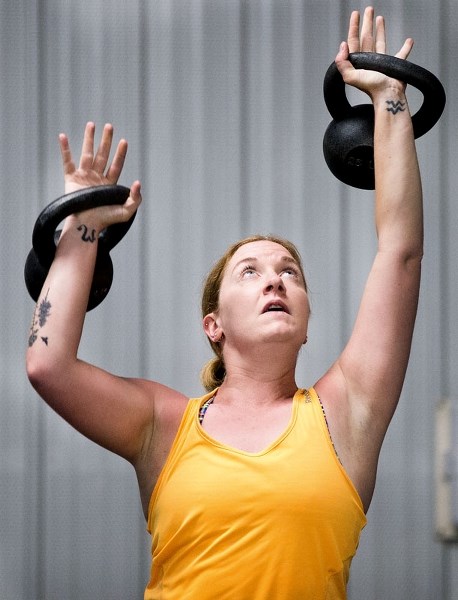Kettlebells. You’ve no doubt seen these misshapen weights at the gym. They resemble a cannonball with a handle, or a teakettle with no spout. They’re colourful, compact, and frankly a little off-putting.
Originally used as counterweights by 18th century Russian farmers to measure grains and other crops on market scales, kettlebells quickly became a show of strength and type of entertainment with strongmen juggling and throwing them at festivals.
Eventually, in the 1940s, lifting them became the country’s national sport, known as Girevoy Sport.
Despite being around for centuries and being used for military training and international competition within the last 50 years, these cast-iron free weights have only recently made a resurgence – popping up in commercial gyms everywhere over the past decade as health conscious individuals turn their attention to functional training.
Now, if you’re anything like me and ignore their very existence in favour of dumbbells, I have some bad news: we’ve been missing out.
Kettlebells are being acclaimed as one of the most effective full-body workouts out there.
Not only do the movements target multiple muscle groups, but they also work multiple energy systems. Kettlebell workouts combine cardio with strength and flexibility training in one quick, simple training session.
“A lot of exercise regimes these days have gravitated towards isolated exercises, so working specific body parts, which is more time consuming,” said Amanda Layden, a fitness instructor at Servus Place. “Instead of doing all those isolated movements you can do a few full-body movements and hit all the same groups of muscles.”
It’s also a killer cardio workout. Layden burns 700 to 800 calories per kettlebell hour-long class.
“I like that. I like to come in, get a really hard workout done and feel really accomplished at the end of it,” she said.
But unlike some cardio workouts, kettlebells, if done right, are fairly low impact and actually work to strengthen tendons and ligaments, rather than destroy your joints (I’m looking at you, treadmills).
That’s because the off centre weight forces your stabilizer muscles to kick in – a bit like squatting on a BOSU ball.
Kettlebell workouts are accessible and convenient – factors Layden believes has played into their recent popularity. The intensive nature means workouts are kept short, and given how small and compact kettlebells are, training can be completed at home or in the office.
The regimes are relatively easy to learn since they involve simple movements.
But technique and progression are key. Make sure you have a strong back and a neutral posture to avoid hurting your spine and surrounding muscles and maintain an athletic stance to avoid hip, knee and lower back injury.
Incorporate kettlebells into your exercise regime by booking a personal trainer or attending one of four kettlebell-inspired group fitness classes at Servus Place this summer.
For more information visit the City of St. Albert website. Classes begin the first week of July.




